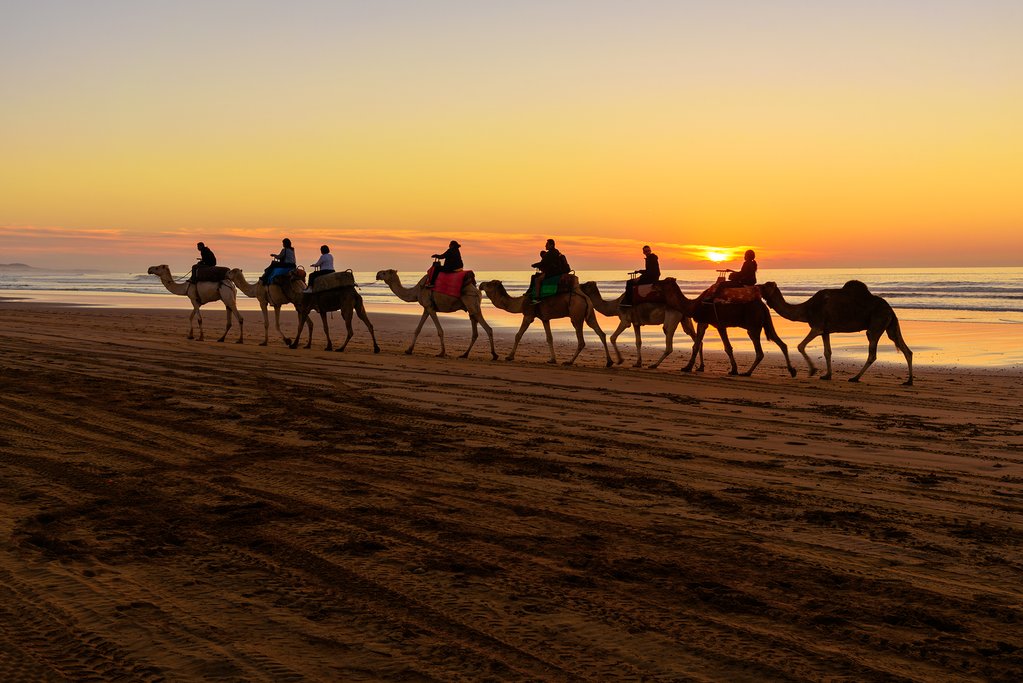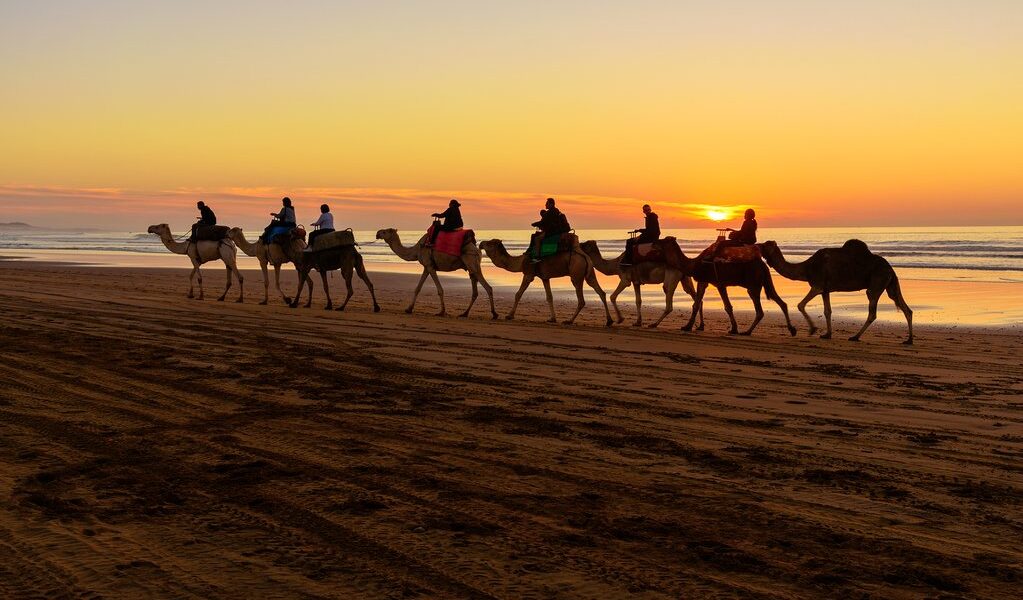
August is the hottest month of the year in Morocco. Plan your trip strategically to beat the heat and make the most of the country’s cooler destinations, including the beach, the mountains, and the north. Read on for more on what to see and do in Morocco in August.
## Morocco in August: A Comprehensive Guide
August in Morocco presents a unique set of travel considerations. While it’s undeniably hot, understanding the nuances of the climate and planning accordingly can still result in an unforgettable experience. Let’s delve into what you can expect during this peak summer month.
**Weather Considerations**
Let’s be frank: August in Morocco is characterized by significant heat. There’s simply no avoiding it. In Marrakech, the weather is typically dry and relentlessly sunny. Daily high temperatures frequently surpass 100°F (around 38°C), making midday exploration challenging. The Sahara Desert experiences even more extreme temperatures, rendering it virtually inaccessible for comfortable travel during this period. The heat radiating from the sand dunes can be intense, and venturing too far without proper preparation is not advisable. Even the higher altitudes of the Atlas Mountains offer limited respite, with daily average temperatures reaching a warm 84°F (29°C). While cooler than the desert, this still necessitates careful planning and hydration when engaging in outdoor activities.
However, the coastal regions provide a more temperate alternative. Ocean breezes play a crucial role in moderating temperatures. In Agadir, for instance, daily high temperatures generally hover around a more manageable 80°F (27°C). Further north, in Tangier, the weather typically remains in the low eighties Fahrenheit, making it comparatively pleasant for sightseeing and enjoying the coastal scenery. Similarly, Chefchaouen boasts a particularly agreeable daily average temperature of 79°F (approximately 26°C), making it a potentially ideal destination for those seeking to escape the intense heat of the interior.
**Navigating Crowds and Costs**
Despite the challenging climate, August remains a popular time to visit Morocco. The influx of tourists during the summer months designates it as high season, which naturally translates to higher prices for accommodations, tours, and even some goods. You’ll likely encounter numerous tour groups in popular cities, particularly around major landmarks and historical sites. While the vibrant atmosphere can be appealing, be prepared for potentially longer queues and more crowded spaces. Interestingly, urban activity often slows considerably during the hottest hours of the day, as locals and tourists alike seek refuge from the sun. This creates a lull in the afternoon, followed by a resurgence of activity in the cooler evenings.
Given the popularity of August travel, securing accommodations well in advance is absolutely crucial. Last-minute bookings are likely to be scarce and significantly more expensive. Moreover, ensure that your chosen accommodations are equipped with air conditioning, which is practically essential for a comfortable stay. If possible, consider selecting a hotel or riad with a swimming pool, offering a refreshing escape from the midday heat.
**Choosing Your Destination Wisely**
The key to a successful August trip to Morocco lies in strategic destination selection. Opting for coastal regions offers a welcome reprieve from the intense heat of the interior. Cities such as Agadir, Asilah, and Essaouira are particularly attractive during this time, although they do tend to become quite crowded. Therefore, advance booking is strongly recommended. Casablanca presents another excellent option in August, benefiting from a consistently refreshing Atlantic breeze that provides a pleasant environment for exploring the old medina and other attractions.
For those interested in exploring the Atlas Mountains, August can still be a viable option, but it requires careful planning. It’s crucial to be mindful of the potential for high temperatures, which can sometimes reach 100°F (38°C) even at higher elevations. The sun’s rays are also particularly strong and direct in the mountains, necessitating ample sun protection. Therefore, consider planning your hiking activities for the early morning or late afternoon to avoid the most intense heat. Remember to take frequent breaks and stay well-hydrated throughout the day.
Marrakech, while a popular destination year-round, can be uncomfortably hot in August. Similarly, the Sahara Desert is simply too scorching to consider visiting during this month. As a general guideline, focus your time in the northern parts of the country, where cities like Tangier and Chefchaouen offer comparatively cooler temperatures, and along the coastlines, where ocean breezes provide a refreshing respite.
**Engaging in Activities**
When planning your activities in Morocco during August, prioritize those near or on the water. Whether you choose the Atlantic or Mediterranean coastlines, the proximity to the sea offers opportunities for swimming, sunbathing, and watersports. Even in the mountains, you can incorporate water-based activities into your itinerary. For example, in the High Atlas Mountains, you can combine a trek through the stunning limestone river canyons of Todra Gorge with a refreshing dip in the Todra River or Dades River.
If your travel plans do include time in cities like Marrakech or Fes, take a page from the locals’ book and structure your day around the weather. Start your day early to avoid the midday heat, drink plenty of water to stay hydrated, and take a substantial break during the hottest part of the day. Utilize this time to relax, enjoy a leisurely meal, or perhaps even take a nap. As the sun begins to set and temperatures cool down, you can venture out again to explore the city’s attractions and experience its vibrant nightlife.
**August Events and Festivals**
Morocco hosts a variety of cultural events and festivals throughout the year, and August is no exception.
* **Moussem Moulay Abdellah Amghar:** This significant Muslim celebration takes place annually in early August, drawing vast crowds of people (and their accompanying tents) to a tranquil stretch of the Atlantic coast near the coastal city of El Jadida. It’s a vibrant display of religious devotion and cultural traditions.
* **Imilchil Marriage Festival:** While the main events typically occur in September, the Imilchil Marriage Festival sometimes commences in late August. This unique festival provides an opportunity for young men and women from the Ait Haddidou tribe to seek partners for marriage. The festivities include traditional dance, music, and food, creating a lively and colorful atmosphere in the village of Imilchil, nestled in the Atlas Mountains.
* **Setti Fatma Moussem:** As one of the most significant religious festivals in Morocco, the Setti Fatma Moussem is a mid-August event held in the scenic Ourika Valley. It showcases agricultural displays, religious rituals, and an abundance of traditional Moroccan cuisine.
**Suggested Itineraries**
Consider these itineraries if you’re traveling to Morocco in August:
* **Morocco Grand Tour from Rabat: Imperial Cities & Coastal Towns (9 Days):** Escape the intense heat by exploring the northern imperial cities and coastal retreats with this nine-day version of the Grand Tour. Starting in Rabat, you’ll visit the Rif Mountains, the captivating blue city of Chefchaouen, the historical city of Fes, and the bustling Marrakech, before culminating your journey in the picturesque beachfront city of Essaouira.
* **Northern Morocco: Tangier, Chefchaouen & Fes (4 Days):** A long weekend is ample time for this four-day exploration of Morocco’s northern highlights. Beginning in Tangier, the trip encompasses the historic centers of Meknes and Fes, the charming blue streets of Chefchaouen, and the Roman ruins at Volubilis.
By carefully considering the weather, planning your activities accordingly, and selecting your destinations strategically, you can still have an enriching and memorable experience in Morocco during the month of August.
B-1637

